A tongue and groove ceiling (T&G) is a timeless architectural feature that brings instant warmth, texture, and rustic elegance to any room. Unlike standard drywall, this style uses interlocking wood planks that fit together snugly, creating a smooth, continuous surface.
It’s a design element that has seen a massive resurgence across the American market, particularly in modern farmhouse, coastal, and craftsman-style homes from Seattle-Tacoma to the suburbs of New York.
The interlocking “tongue” on one plank slides seamlessly into the “groove” of the next, hiding fasteners and providing a professional, finished look that is superior to simple wood paneling. This elegant process offers both an aesthetic upgrade and potential sound-dampening qualities.
Popular Design Styles and Wood Choices
1. The Classic White Painted Tongue and Groove Ceiling
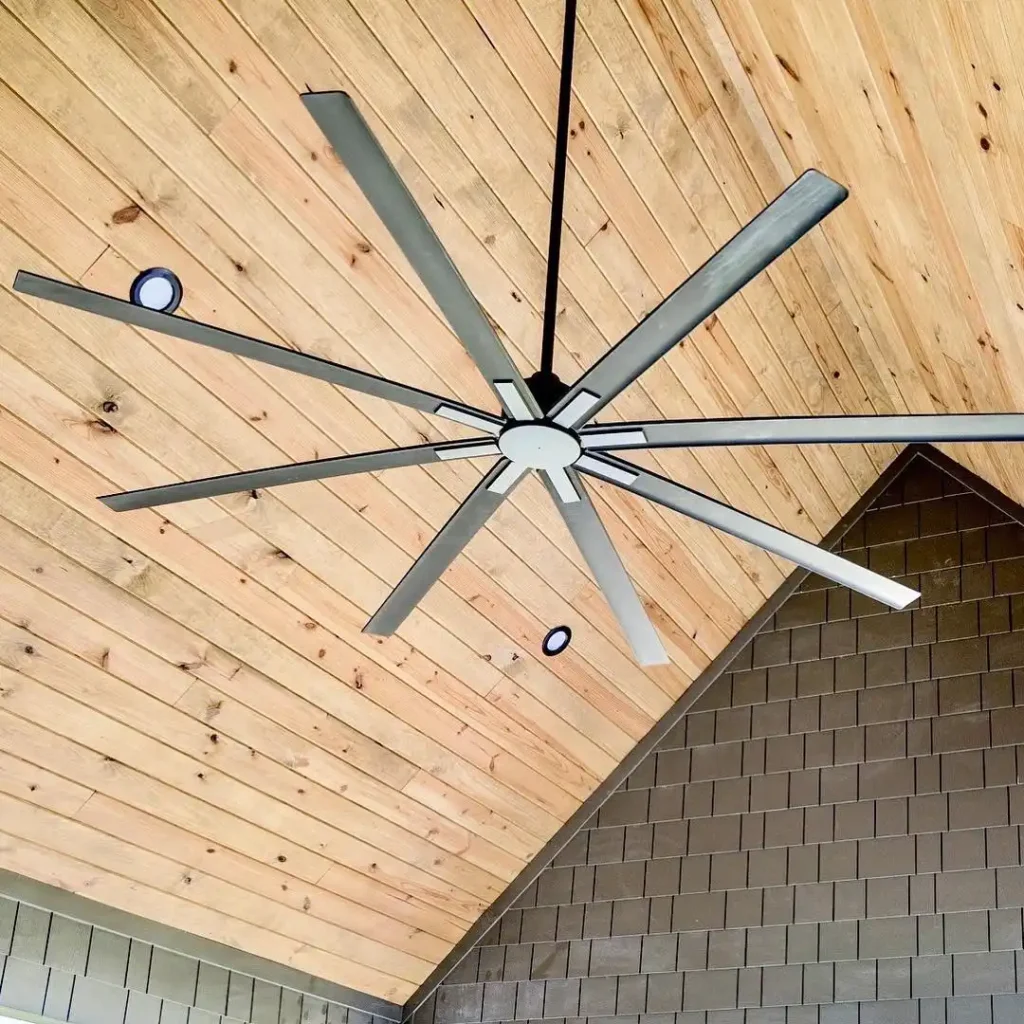
Credits: @cookseyfarmhouse
This is arguably the most popular solution in modern American homes. Painting pine or poplar T&G boards a bright white (like Sherwin-Williams Snowbound) creates a clean, airy look while maintaining texture. It is frequently seen in kitchens and master bathrooms, especially when combined with subway tile and shaker-style cabinets.
2. Rustic Knotty Pine for Farmhouse
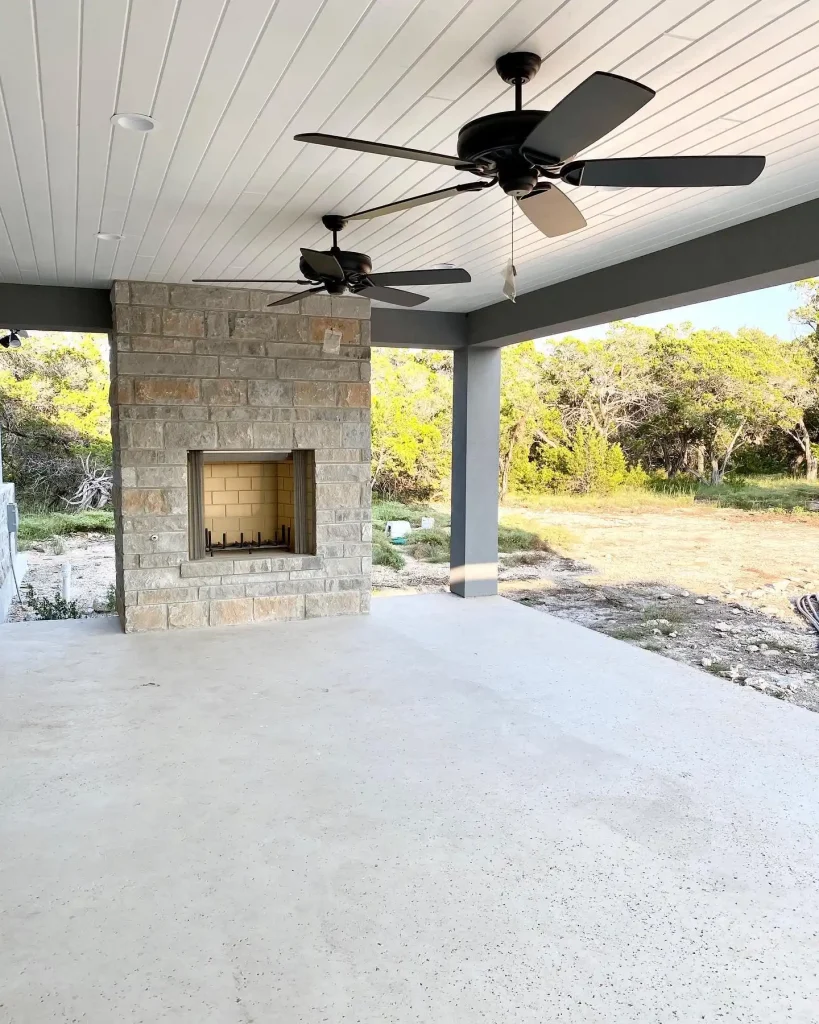
Credits: @highcottonhomes
For a true rustic or cabin aesthetic, unpainted or lightly stained Knotty Pine is the go-to. Its visible knots and grain patterns add authentic character, making it a favorite for vaulted living rooms in mountainous regions near Denver or in sprawling ranches.
3. Rich Oak or Cherry for Traditional Elegance
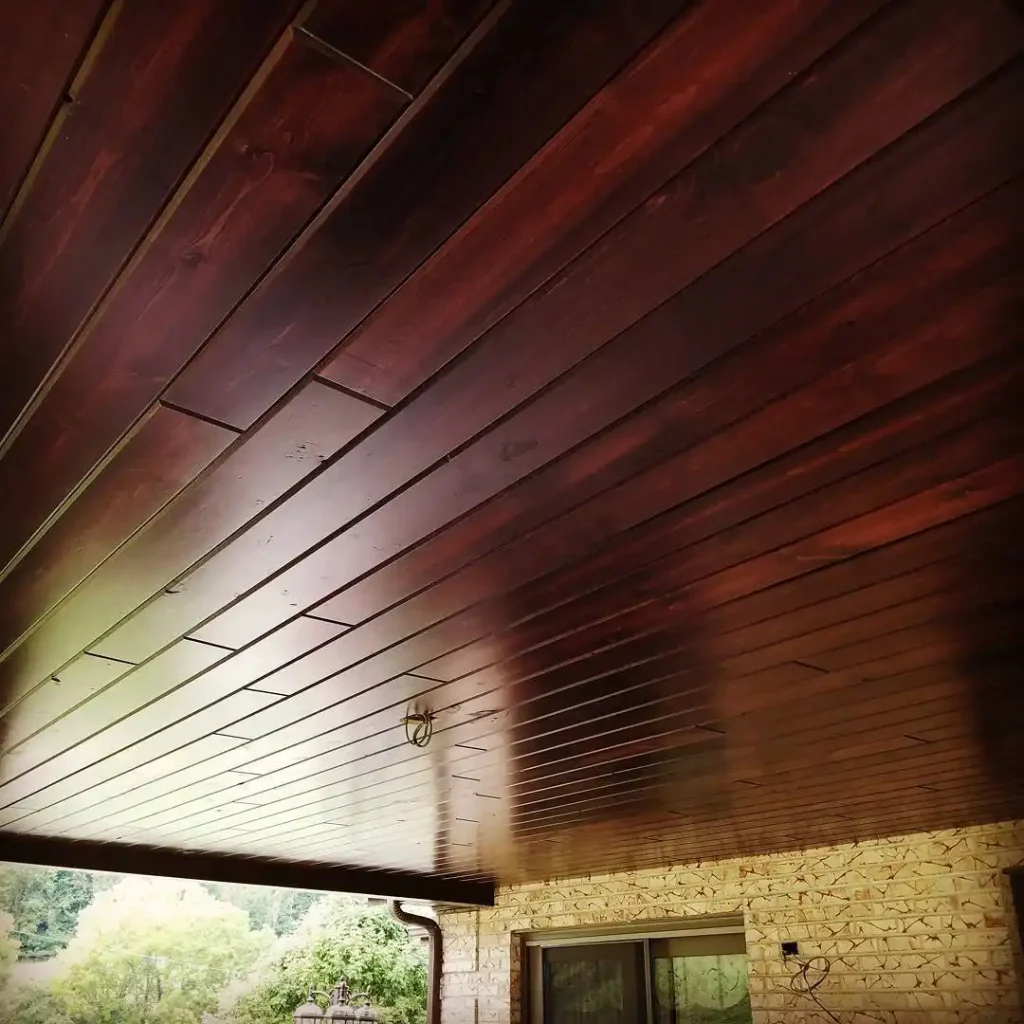
Credits: @omie_lee
In formal dining rooms or studies, especially in historic homes in Chicago, homeowners often choose richer hardwoods like Oak or Cherry. These woods bring deep color and high durability, contributing to a more formal, traditional ambiance. This high-end material installation requires a slightly higher budget.
4. Coastal Cedar for Porches and Patios

Credits: @lowercapecarpentry
Cedar is naturally resistant to moisture and insects, making it an excellent choice for covered outdoor spaces like patios, porches, and sunrooms. Its natural reddish-brown hue and aromatic quality evoke a relaxing, coastal feel perfect for homes near the Pacific or Atlantic coasts. You can also try faux vaulted ceiling for the costal home as well.
5. Nickel Gap for a Modern Look
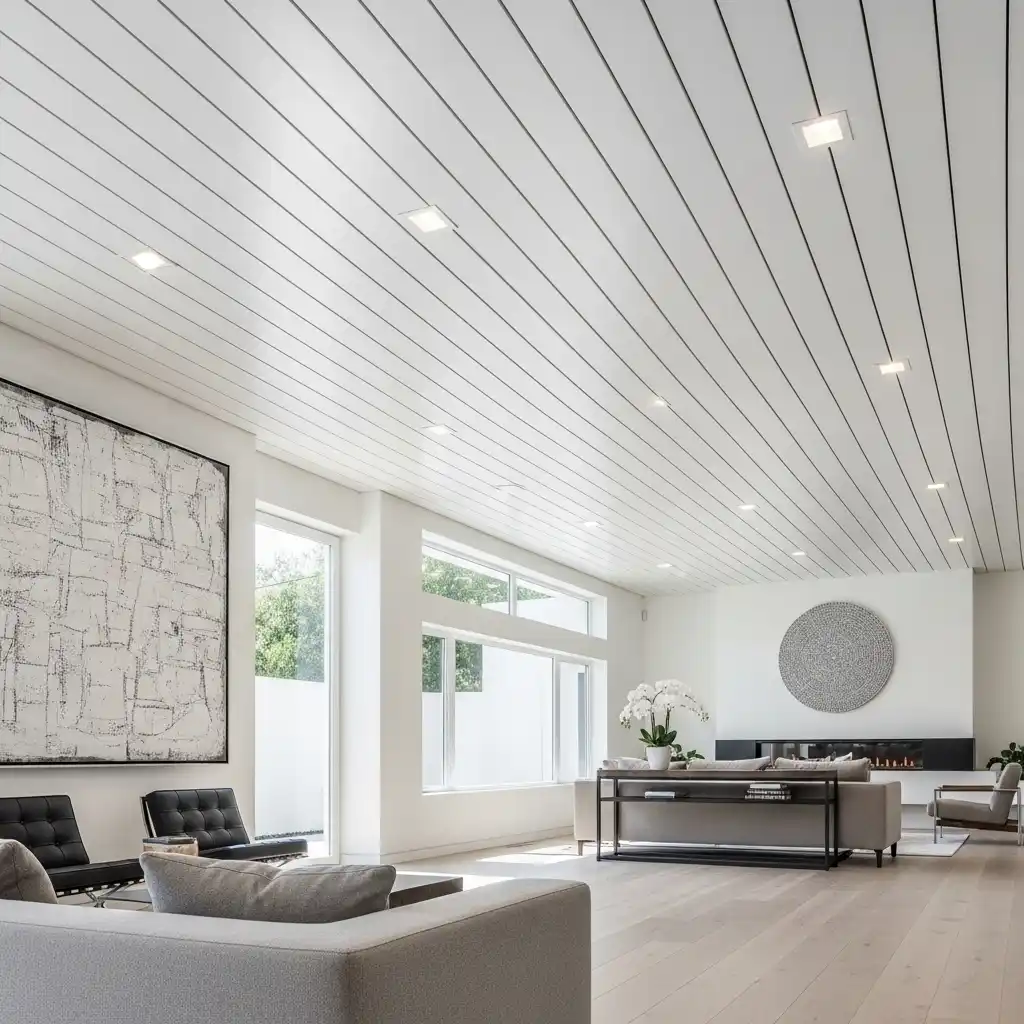
While traditionally a variation of shiplap, T&G can be milled to create a small, consistent “nickel gap” between the boards. This provides the clean, linear look of shiplap but with the stability of the tongue and groove process, popular in sleek, updated homes in Los Angeles. For living room ceiling you can also try various designs from our guide.
6. Combining with Exposed Beams

T&G is the ideal backdrop for decorative or structural wood beams. The planks cover the ceiling surface, providing a smooth field that allows dark-stained or distressed beams to truly pop and become the central focal point of the room.
7. Finishing with Crown Molding
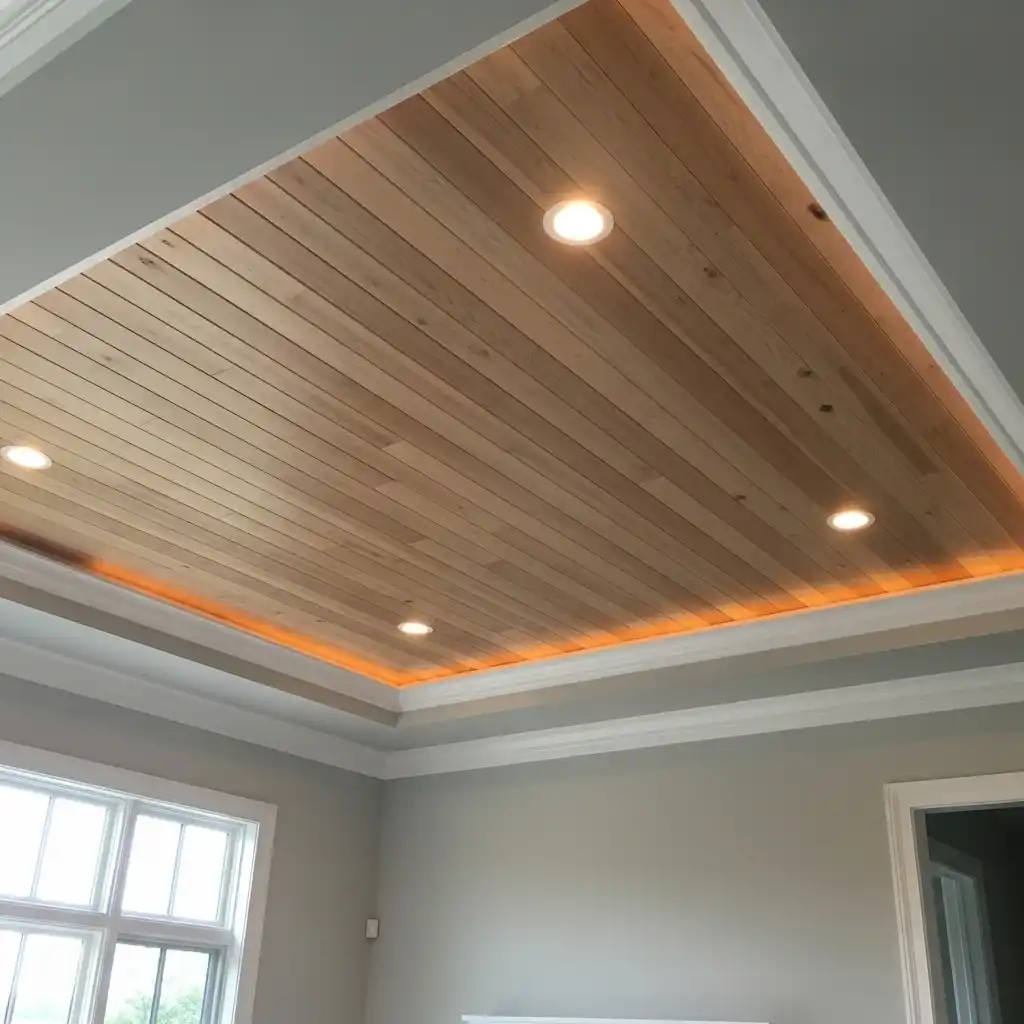
To transition the wood ceiling smoothly to the wall, homeowners should incorporate crown molding. This finishing touch adds a polished, upscale look, turning a simple wood plank ceiling into a refined architectural feature.
Budget & Cost Insights for the American Homeowner
8. Average Total Cost for Installation

The average total cost for professional Tongue and Groove Ceiling installation in the U.S. ranges between $4 and $10 per square foot. This includes both material and labor costs. A typical 200 sq. ft. bedroom ceiling might cost around $800 to $2,000 in total.
9. Material Costs by Wood Type
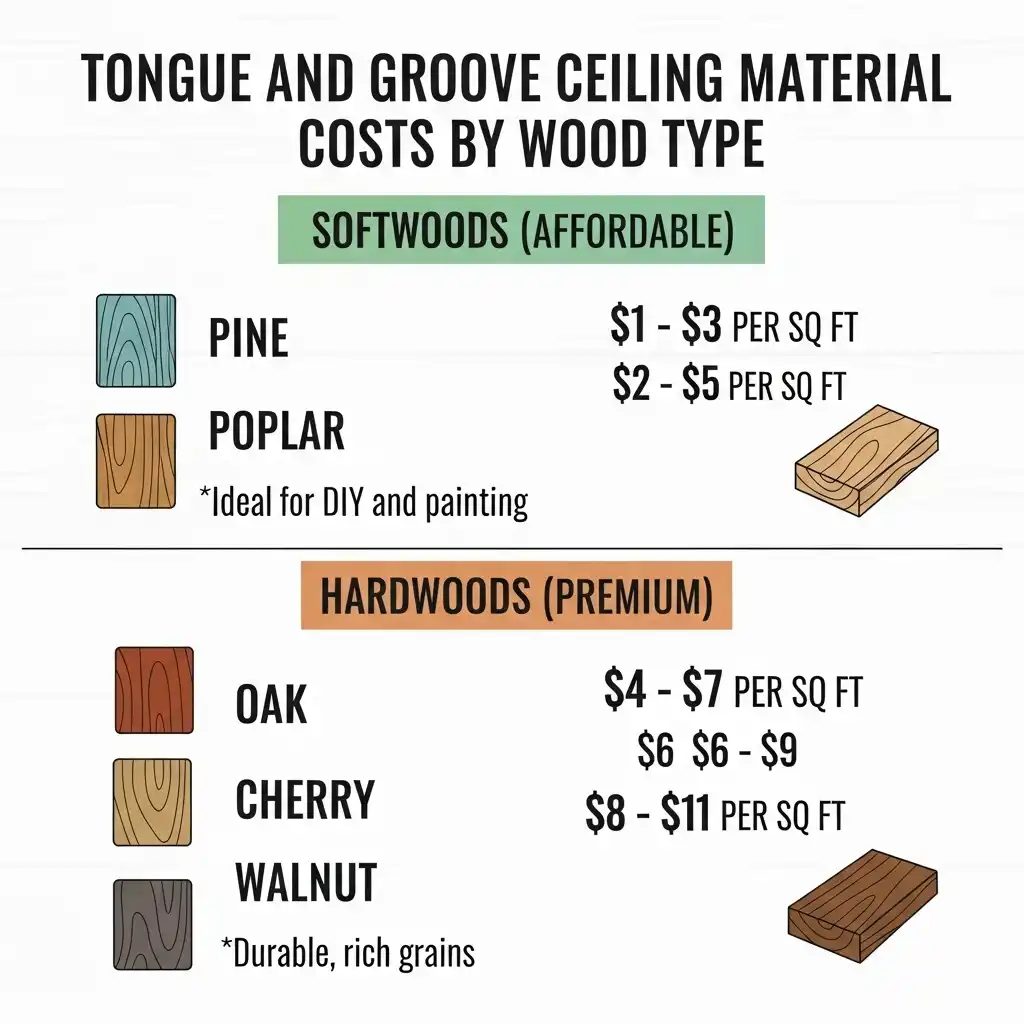
Budget-conscious American DIYers often select softwoods: Pine (the most affordable) or Poplar (which takes paint very well), costing between $1 and $5 per square foot for materials. Hardwoods like Oak, Cherry, or Walnut can run from $4 to $11 per square foot. But if your budget is low you can also try cheap wood ceiling.
10. Labor Fees
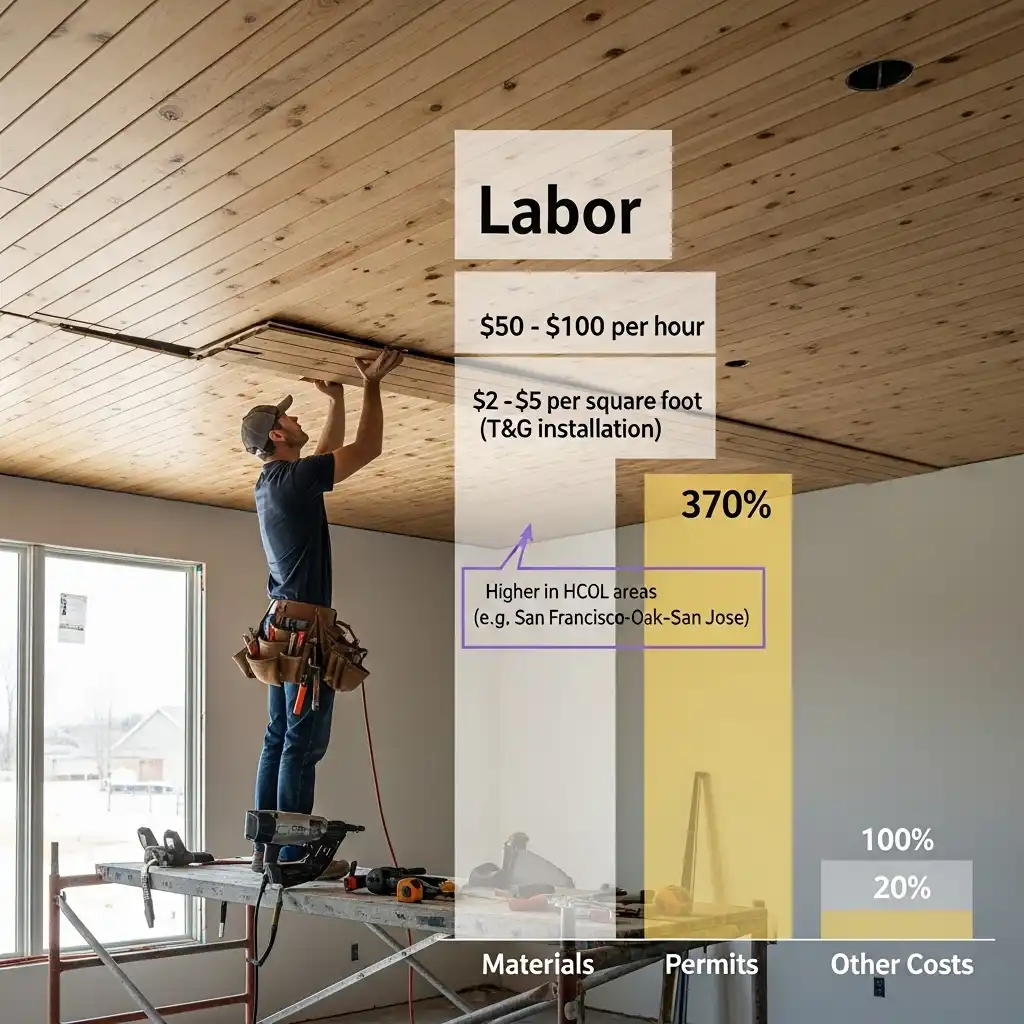
Labor is a significant part of the total cost. Contractors generally charge $50 to $100 per hour, or sometimes a flat rate of $2 to $5 per square foot for T&G installation, though this can rise in areas with a high cost of living like San Francisco-Oak-San Jose.
11. DIY Cost Savings
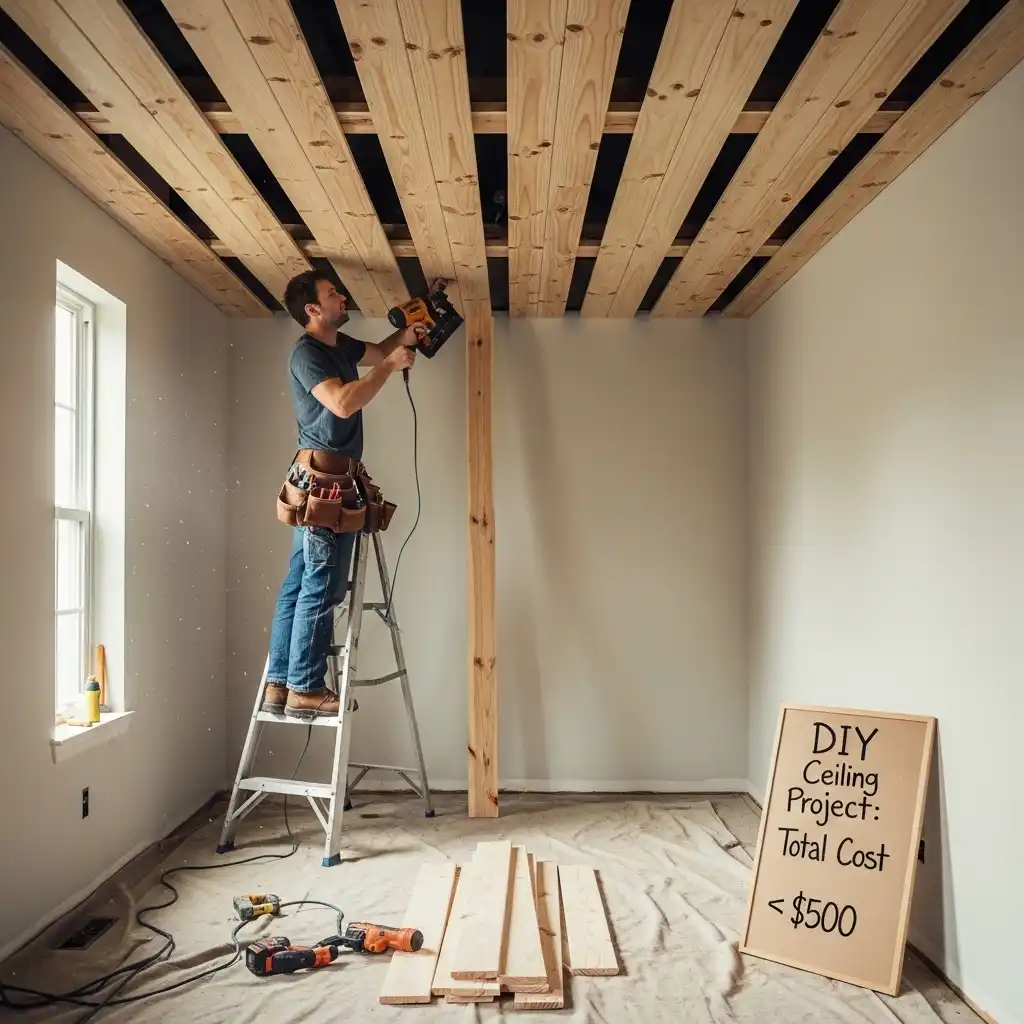
The biggest savings come from a DIY approach. By doing the installation yourself and choosing affordable pine, you can often complete a project for less than $500 in a standard room, proving it’s an achievable home upgrade on a tight budget.
12. Pre-Finished vs. Unfinished Planks

Pre-finished (stained or painted) Tongue and Groove Ceiling planks are a fast and reliable solution, saving time on site. However, unfinished planks are 15% to 30% cheaper, allowing you to save money by staining or painting them yourself before the process of mounting them to the ceiling begins.
Installation and Practical Benefits
13. Direction of Planks
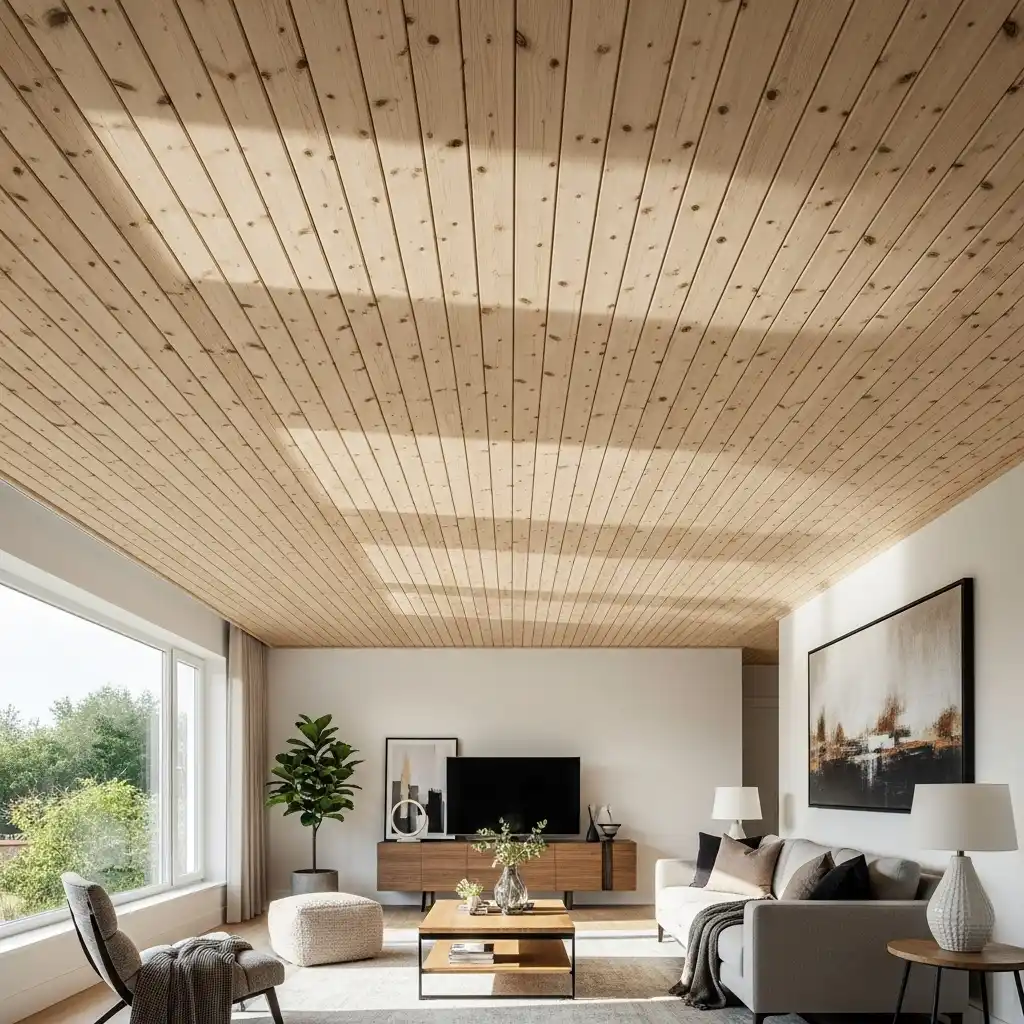
The planks should run perpendicular to the ceiling joists for proper support. A common design trick is to run the boards parallel to the longest wall to make the room appear longer.
14. Covering Imperfections
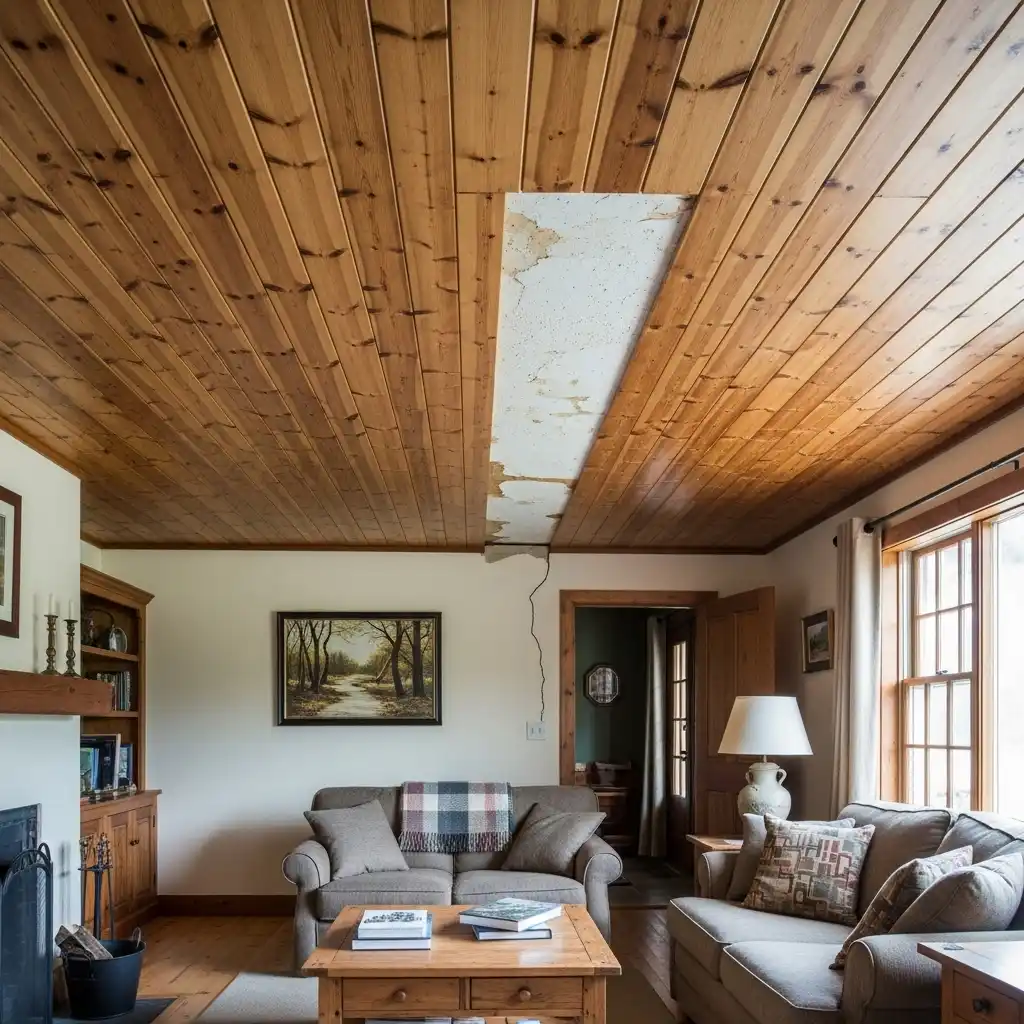
T&G is an excellent solution for covering up an existing damaged ceiling, outdated finishes like popcorn texture, or minor ceiling repairs. This eliminates the messy and time-consuming process of extensive drywall repair.
15. The Hidden Fastener Advantage
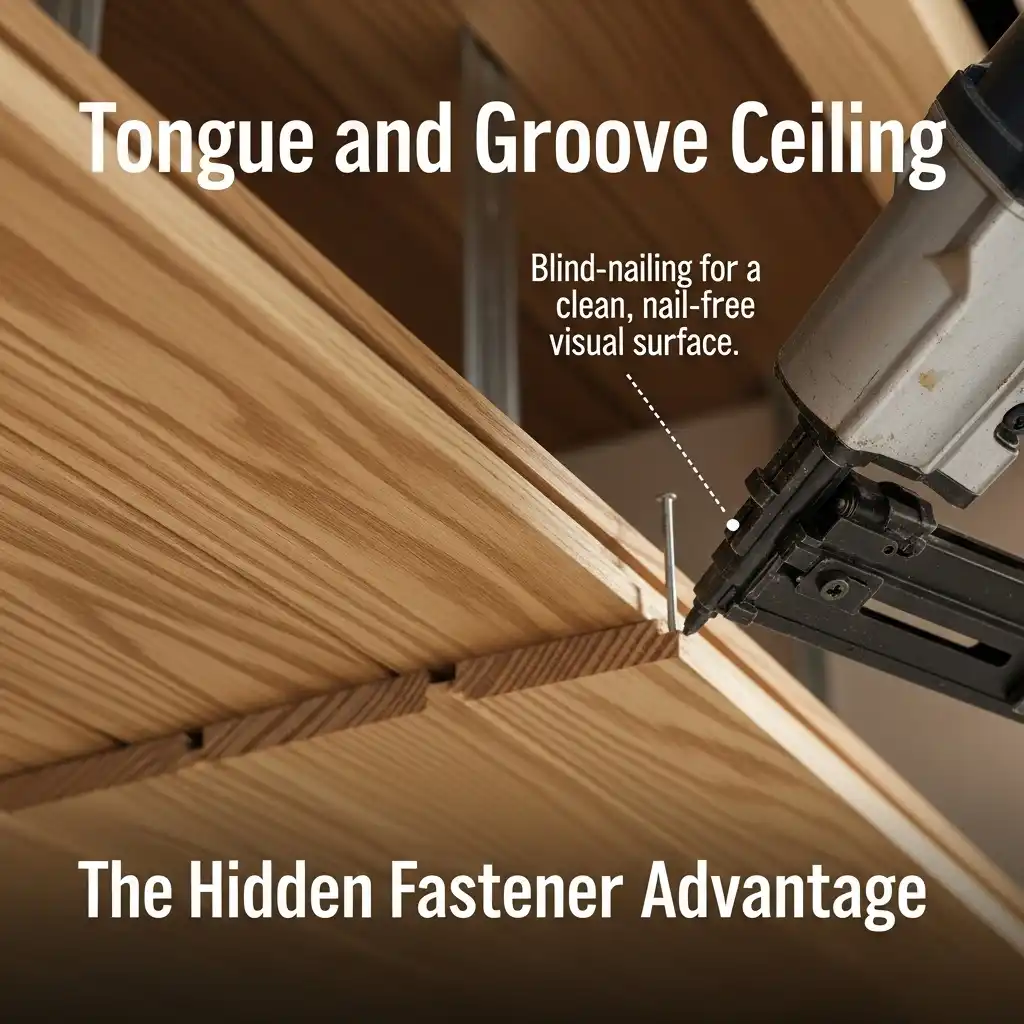
The tongue and groove system allows you to blind-nail the planks. The nail is driven through the tongue and is hidden by the groove of the next piece, resulting in a clean, nail-free visual surface.
16. Sound Absorption Qualities

Wood ceilings offer better acoustic properties than flat drywall. The small gaps and wood density help absorb sound, providing a quieter, more intimate feel in rooms—a bonus for open-concept homes.
17. Expansion and Contraction

Because wood naturally expands and contracts with humidity changes, the interlocking T&G pattern is crucial. It allows the planks to move without creating visible gaps, maintaining the finished aesthetic.
18. Ideal for Sloped or Vaulted Ceilings

The easy-to-cut and fit nature of T&G planks makes them ideal for tricky angles found in vaulted or sloped ceilings. They follow the line of the roof with ease, which is a key part of the process for achieving a custom look.
19. Wood Species and Climate

In humid climates, like those in the American Southeast, homeowners often choose Cypress or Cedar due to their natural resistance to moisture and decay, making them a durable solution for the long term.
20. Simple Maintenance

Unlike drywall that requires repainting to cover blemishes, T&G ceilings only need occasional dusting or wiping. Stained ceilings can be re-sealed every few years to maintain their luster, a simple maintenance process.
Frequently Asked Questions (FAQs)
What is the approximate budget for a tongue and groove project?
Tongue and groove is a moderate-to-high-end upgrade. While the average cost is $4 to $10 per square foot installed, a DIY approach using affordable Pine can keep the budget significantly lower. Plan for an average total of $2,000 for a standard-sized room when hiring a contractor.
Is the installation process a good fit for a DIY homeowner?
Yes, the interlocking nature of T&G boards makes the installation process much simpler than working with drywall or shiplap, as the fit is snug and nails are easily hidden. A homeowner with basic carpentry skills can tackle this process over a long weekend.
Where can I purchase T&G planks in the USA?
High-quality T&G planks can be found at all major American home improvement stores like The Home Depot and Lowe’s. For specialty woods or pre-finished planks, it is recommended to search local lumberyards or specialized wood product suppliers in metropolitan areas.
In conclusion, a tongue and groove ceiling is more than just a surface covering; it is an investment in your home’s character, offering a beautiful, textured finish that appeals to modern and traditional tastes alike. Its stability, ease of installation, and ability to use various wood species provide a versatile design solution that consistently increases the perceived value of an American home.




